
Step lively, stand and stay put, and allow the judge to scrutinize every inch of you. Shimmy the tail, act dignified and thoughtful, but exude enthusiasm.
Such is the job of a show champion.
Grand Champion Riley, a 5-year-old Clumber Spaniel bred by Sarah Beaird and Dennis FitzPatrick, is a top-10 champion who finds winning in conformation to be a breeze. However, his job becomes a lot more difficult outside the show ring.
Riley Steps Out of the Ring Into a Vest
For three years, Riley has performed full-time service dog duties for his handler, Lewis Franklin of Monmouth, Oregon, who suffers from post-traumatic stress disorder (PTSD). As a first sergeant with a total of 21 years in the U.S. Army and the Oregon National Guard, Franklin served two combat tours in Iraq and one tour during Hurricane Katrina.
“Riley is my constant companion, and he’s trained to monitor me throughout the day,” says Franklin. “He helps with my mobility and anxiety,” he says. “When 70-pound Riley puts his foot on me, it gets my attention. His behavior means he knows I’m beginning to feel upset, and I need to get to a safe place.”
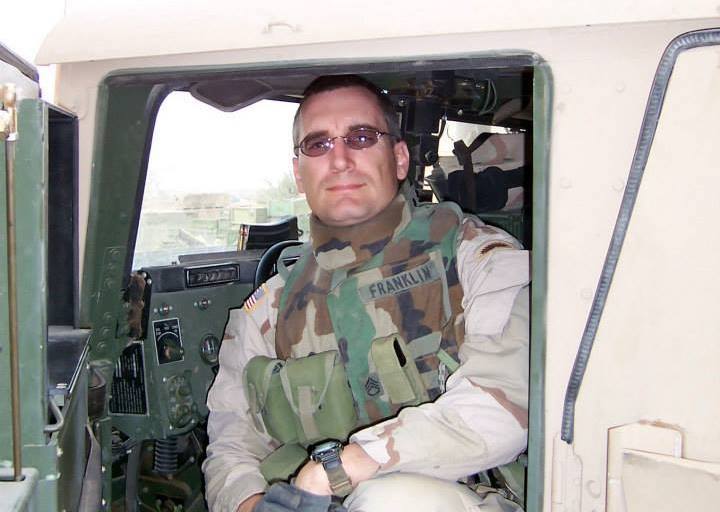
“After he left the military, it took Lewis over a decade to realize a wall wasn’t going to blow up,” says Beaird, Lewis’s wife. “Today, if we’re driving, and he sees a bag at the side of the road, it reminds him of the one in Iraq that detonated the vehicle he was riding in.” When the car exploded, two men died, and Lewis suffered a traumatic brain injury, a concussion, and hearing loss.
The Clumber Spaniel’s loyalty and sixth sense boost Franklin’s well-being. The veteran credits the dog for helping him move from attending group therapy twice a month and visiting a psychologist two-to-four times a month, to needing almost no private psychology appointments.
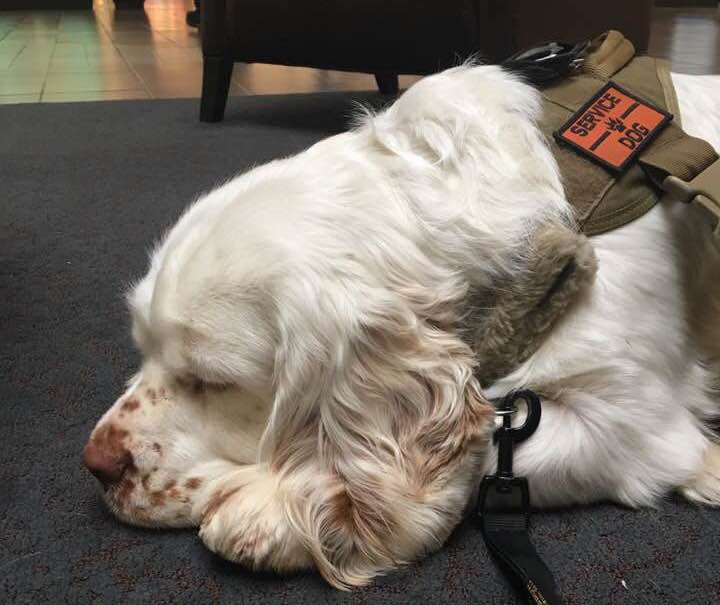
Nosy in a Good Way
Why rely on a heavy-boned, long and low breed for a service dog? Labrador Retrievers and Golden Retrievers usually fill this position.
“This breed can do anything you ask of it,” says Jan Sutherland, president of the Clumber Spaniel Club of America. “They’re companion dogs who want to be with you, and they will adapt to anything.”
Because they are substantial and massive-boned with a deep chest, the Clumber has the power and endurance necessary to help support an owner with mobility issues.
This breed also has the right disposition to serve as someone’s constant companion. “I’ve spent time around Riley, and he’s a sweet dog,” says Sutherland. “He’s like a lot of gentle, loyal, and affectionate Clumbers with a desire to please. They can perform well as therapy, service, or support dogs.”
The largest of the AKC flushing spaniels, the primarily white Clumber has sparse lemon or orange markings, mostly on its face, and is a rare breed with unique qualities. It was one of the first 9 breeds the AKC recognized when it was founded in 1884.
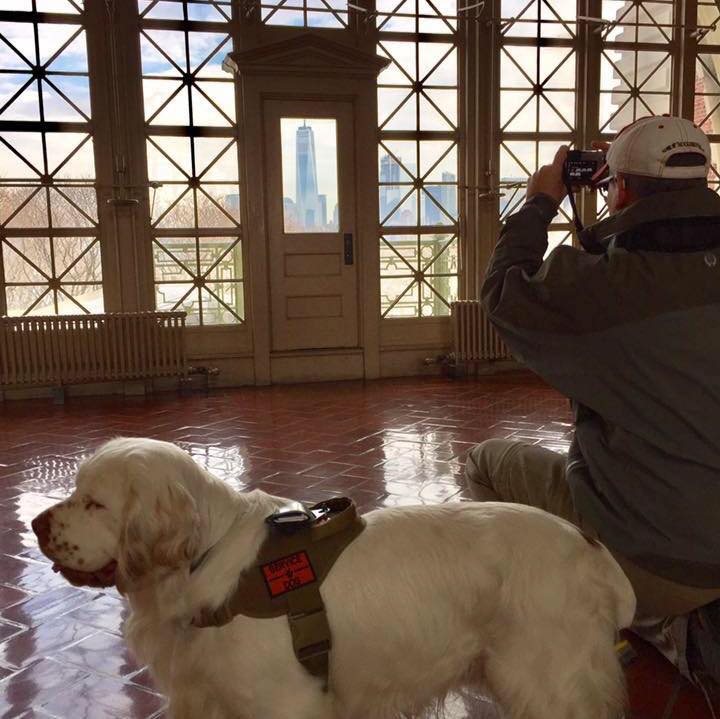
“You don’t see many Clumbers around, but they’re extremely intuitive, with a strong sense of purpose while they work,” says Sutherland. “They know who they are, but they’re all about the nose.”
Clumber Spaniels excel at scent work, barn hunt, and tracking.
The breed’s ability to sniff odors and pursue their source often turns up oh-wow-oh-no results. According to Sutherland, Clumbers land themselves in trouble because they can open a pantry, find snacks, and excel at counter-surfing. “At only 18-to-20 inches in height, Clumbers don’t seem tall enough to reach food left in the kitchen, but their long bodies let them reach even the back of the counter.”
In addition to getting them into trouble, their super-sensitive noses are used to help people. Sutherland knows a woman with diabetes whose Clumber Spaniel alerted her during the night when her blood sugar level dropped dangerously low. “This dog was never trained as a diabetic alert dog, but detected the different odor of the blood sugar,” she says.
The club president remembers when JD, her sister-in-law Natalia’s Clumber, was a lifesaver. “While recuperating at home after undergoing brain surgery, Natalia began struggling to breathe,” says Sutherland. “JD ran to the garage where Jason, Natalia’s son, was working out. Jason knew JD would never leave his mother’s side unless something was wrong, so he rushed into the house and called 911.”
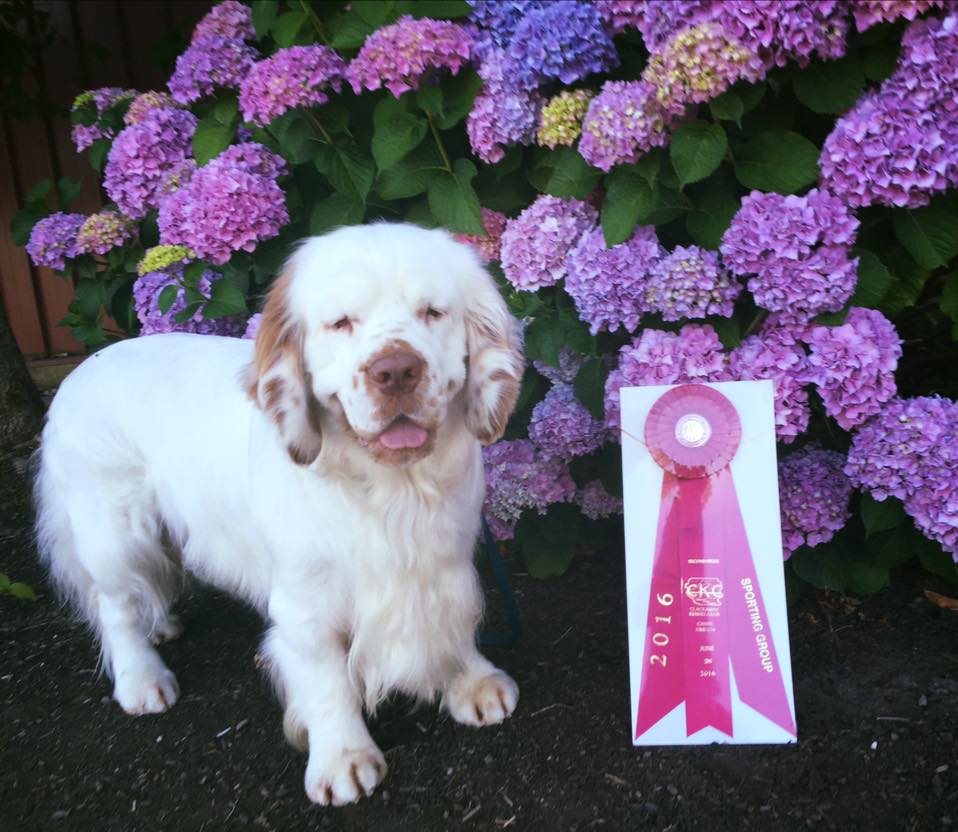
From Ribbons to Right-Hand Dog
Franklin’s Riley really came along at the right time. In 2010, when the army veteran came home to Corvallis, Oregon, he wanted a service dog to help him cope with his PTSD, but he couldn’t afford the $15,000-to-$35,000 expense.
When Franklin married Beaird, a former protection and obedience dog trainer who began breeding Clumbers in 2011, it proved serendipitous.
“I wasn’t planning on keeping a male from my second litter, but one puppy stood out from the rest,” remembers Beaird. “Riley was attentive and curious about his surroundings. The first time I put his leash on, he seemed to say, ‘Yeah, I got this,’ and he was game to try anything.”
Beaird began showing Riley, and sometimes Franklin would take him into the ring if she had to show another dog. She noticed Franklin always touching the soft-coated canine and thought a Clumber might make a good service dog for him.
“We played around with Riley’s sister who draped herself around Lewis, but that Clumber wasn’t as outgoing like her brother,” says Beaird. “I also ride and compete in horse shows and thought Lewis might relate to horses, too, but they didn’t do anything for him.”
Beaird concluded Riley was the obvious choice to help Franklin. “The dog was stable, focused, and exuded personality, although it was hard for me to give up Riley.”
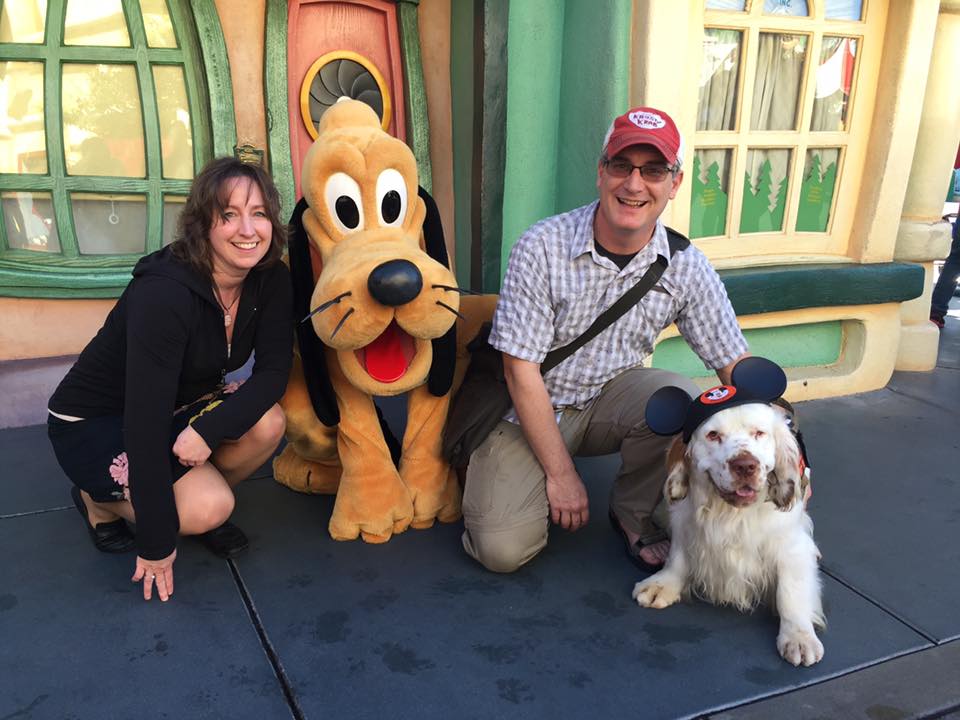
How did this breeder deal with her prized Clumber moving from the top 20 breed spot to Franklin’s full-time service dog?
“I feel so proud,” she says. “Nothing is better than knowing a dog you co-bred can achieve elite champion status, yet can serve an even nobler purpose.”
Beaird researched how to train a service dog, asked other people with service dogs for tips, and questioned Franklin about what he did when he felt anxious.
“We went out in public and trained Riley how to behave in a restaurant and in the classroom while Lewis taught graphic design at Linn-Benton Community College in Albany, Oregon,” says Beaird. “For a year, it was a lot of on-the-job training.”
Throughout the process, the veteran learned to trust the dog’s alerts. “I know he will let me know if there’s a problem, so it relieves my pressure to stay hyper-vigilant,” says Franklin.
The Clumber travels with Franklin to work conferences, including his recent trip to speak at the Oregon State Capitol in favor of veterans’ services. “He even sleeps on the bed and wakes me if I’m having a nightmare.”
When Riley’s service vest comes on, he listens to Franklin.
When the vest comes off, the Clumber knows it’s showtime.
Whether they’re in the show ring, the state capitol, or relaxing at home, Franklin says, “This dog has changed my life.”

